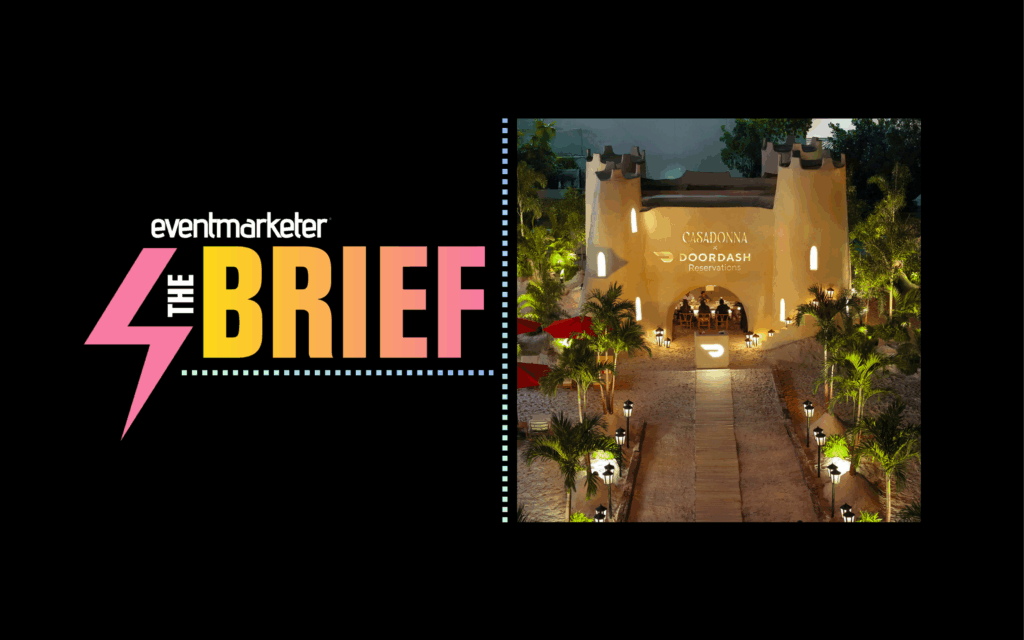Rochester, NY-based Eastman Kodak Co. has been busy this fall with a national P-O-P replacement program dubbed “Project Clean Slate.”
Looking to clear up category confusion (focus groups showed that shoppers knew little about film speed, although marketing often centered on it), Kodak has refreshed both packaging and supporting materials in what could be the company’s largest re-merchandising initiative ever, a retailer-specific P-O-P blitz spawned from months of consumer research and focus groups.
Kodak went well beyond traditional means to get retailer participation, producing a P-O-P template accounts could customize and configure with graphics for specific stores or departments. “We know it is extremely difficult to get P-O-P placed in stores,” says Kodak marketing manager Fernando Zucchi. “So we needed to come up with a program that would actually get executed.” Kodak manufactures and ships the displays with help from Eric Mower & Associates, Rochester.
“Depending on the retailer, the displays can be either larger or smaller than before,” says Zucchi. “But we’ve built a system that is flexible [yet] presents strong branding and merchandising for Kodak.”
Remember when generating display activity was accomplished by producing the creative and calling the trade account? The standees were most often constructed by stock boys, placed in the aisles, and taken down at the end of the program by field forces.
That was then, and you know how it is now: Stores are clogged with products, chains have greater control, and there’s a slim-to-none chance of getting a stock boy to spend more than three minutes putting together a standee. Planning to support a promotion with P-O-P and actually getting the displays up have become two very different tasks.
“Retailers are clearly less open to putting up P-O-P than before,” says Rob Colarossi, vp-channel marketing and promotion with Plano, TX-based Dr Pepper/Seven-Up. “The chains are getting smarter, which means we have to change the way we work with them.”
New House Rules
Retailers know the in-store environment is their only source of true one-to-one marketing, and as a result they’ve taken over. Restrictions have become tighter, starting two years ago with a moratorium on brand window signage in several chains and followed by a general call for “simpler P-O-P that didn’t detract from the overall store environment or make too much noise,” says Mike Musachio, executive vp-group creative director with promotion agency Wunderman, New York City.
Now, most in-store policies are as long as Santa’s Christmas gift list. Minneapolis-based mall chain Musicland changes displays in its 1,300 units weekly, and will shortly begin a policy that bans any P-O-P that doesn’t feature two-sided signage and a merchandise holder. “And we no longer accept shelf-talkers, posters, or window clings,” adds Flora Delaney, director of visual merchandising and space management. “The walls, shelves, and windows are where we get to tell our message.”
Dallas-based 7-Eleven recently began a policy through which all outside P-O-P must be manufactured by the c-store chain itself (although frequently funded by packaged goods makers) in a bid to create a more consistent look. “We don’t want to limit manufacturers’ ability to build sales. We want to work together to help build our sales and the brand as well,” says Frank Kern, 7-Eleven’s director of national promotions and brand image. “We’re open to working with vendors on P-O-P programs. But it has to work within our larger strategy.”
The company has also adjusted its promotional calendar, shifting from monthly windows to 60-day themed periods. The chain is targeting the expanded windows further in advance and is proactively recruiting partners rather than fielding calls. The Promotion Network, Dallas, handles.
These changes are forcing manufacturers to improve communication with trade partners, increase account-specific programs, and find new ways to motivate chains and field forces. Here’s a few tips:
Communication: Brands increasingly are including retailers in the planning process and getting approval on creative before going to print. Get cozy with trade partners and “take great pains” to find out what their short-term and long-term goals are, says Chip Hoyt, director of consulting with Danbury, CT-based Kenosia Solutions.
If you don’t have a dedicated team, get one. Dr Pepper/Seven-Up recently established a channel marketing department to continuously take the trade pulse. “We go in and talk to the accounts about their strategy, and from there we’ll build the signage,” says Colarossi. St. Louis-based Anheuser-Busch runs annual “Retail Monitor” P-O-P checks to meet with retailers and help with planning. “P-O-P is extremely important to lift sales,” says Dan McHugh, A-B’s director of retail sales promotion. “These days, we’re pre-tuning our programs to the retailer’s wants and needs.”
Manufacturers with direct-store delivery (DSD) systems obviously have an edge, since they get reps into stores as often as six times per week. But other CPGs are maintaining (or increasing) field forces to help with P-O-P compliance and store staff relations.
Customization: Increased communication between manufacturer and retailer is leading to niche marketing programs that meet individual needs — and we’re not talking about a space for account-specific logos on standees and loaders.
“The customers are saying, ‘I like your national program, but I don’t want to look like my competitor across the street.’ So we play that game and spin national signage into something account-specific,” says Bob Shafer, vp-marketing with Somers, NY-based Pepsi Bottling Group.
Dr Pepper and Troy, MI-based Kmart, for example, hooked up this year on a promotion that put coupons for the chain’s private-label Route 66 line on soda bottles. It was targeted, gave the retailer as much play as the brands, and met objectives for both sides. “If you can’t tell who made the P-O-P, that’s cooperative,” says Chris Grindem, a senior partner with Integrated Marketing Solutions, Lincoln, NE. “The display needs to support the brand and the retailer seamlessly.”
Check beforehand on size requirements and placement preferences. And remember, retailers can have very different requirements. “It’s dangerous to say one size fits all,” warns A-B’s McHugh.
Motivation: Not everyone has the cash for slotting and pay-to-stay deals. But sometimes, a little motivation is all it takes. Miami-based Burger King last year ran a contest to ensure that franchisees would support a new Frozen Coke drink display near drive-thru areas. Managers were encouraged to have their pictures taken next to the P-O-P to be mailed in for judging, with the most creative shot earning $500.
Modesto, CA-based California Milk Advisory Board last month supported its National Pizza Month with an incentive program that sent staffers into 3,200 participating retailers to see if P-O-P was displayed. If it was, each store employee received a $50 American Express gift cheque. Chicago-based Flair Communications’ San Francisco office handled. “It was an easy way to make sure P-O-P stayed up for the duration of the program,” says Jennifer Mullen, the Board’s director of retail service and consumer promotion.
Experimentation: Other brands are upping P-O-P compliance rates by coming up with exclusive SKUs or product variations. General Mills, Minneapolis, executed several programs for Cheerios that shrink-wrapped a pair of cereal boxes around a plastic heart-shaped bowl in limited accounts. Other manufacturers have tried alternative sizes, limited-run flavors, or even a cause-marketing effort tying a special product to a retailer’s favorite charity. “Retailers love to experiment, far more than packaged goods companies give them credit for,” says Grindem. Signage promoting such efforts are more enticing.
Also, be creative with store space by finding new places to install. Coke, for instance, is literally skirting the window ban by offering red-ribbon decals to post on the edges of windows so as not to clog up the primary real estate.
Change is Good
Blaming lack of compliance on retailers is too easy. Brand marketers who haven’t adjusted their behavior to meet new retailer demands have nobody to blame but themselves. “If you have product and promotions positioned in an account-ownership way, the retailers will take the steps to help execute,” says Colarossi. “It must be a collaborative effort or you’ll lose.”
“Retailers make money on the buy, not the sell,” says Hoyt. “They control the customer communication at the point of sale. Get off your fanny and get out to your accounts and see what they need.”
Playing to their needs may satisfy your brand’s wants.



